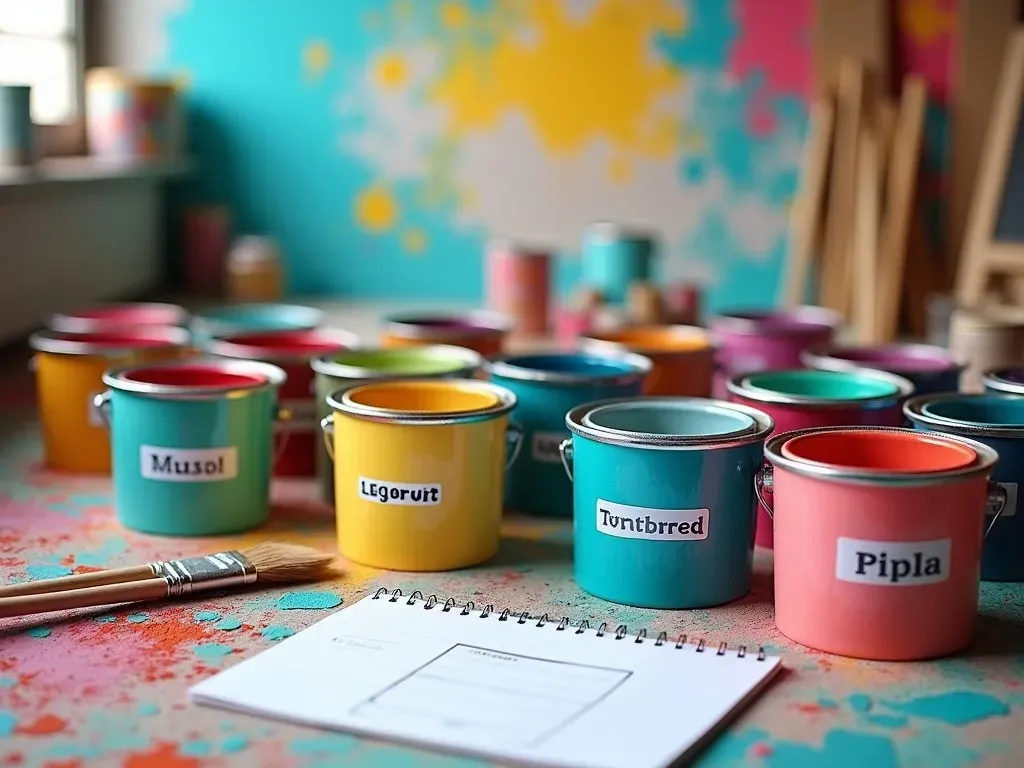When it comes to launching a painting business, one of the most crucial steps is choosing the right name. The name of your company acts as your brand’s identity and can have a significant impact on your business’s success. Fun, catchy, and professional paint company names can attract customers and set the tone for your services.
Choosing the right name for your painting business can help you resonate with your target audience and convey your core values. In this article, we will explore various types of paint company names, including catchy, professional, funny, and creative options. Additionally, we will provide some tips for selecting the best name for your painting venture.
Types of Paint Company Names
Choosing a name for your painting company isn’t just about creativity; it’s about formulating a brand that embodies quality, reliability, and artistic talent. Below are several categories of paint company names you can consider:
Catchy Paint Company Names
Catchy names tend to be memorable and can create an instant connection with your audience. Here are some examples:
- Brush Buddies
- Color Me Crazy
- Paint the Town
- Vivid Visions
- Fresh Coat Warriors
- Brighter Horizons
- Splash & Dash Painting
Professional Painting Company Names
For those targeting a more serious, corporate clientele, a professional name can instill trust. Examples include:
- Elite Painting Solutions
- Precision Paint Pros
- Pinnacle Painting Group
- Apex Painting Services
- Majestic Colors LLC
Creative and Fun Painting Business Names
A little fun in your company name can catch attention and demonstrate your artistic flair. Here are some creative suggestions:
- Hue Are You?
- Palette Pals
- Stroke of Genius
- Wall & All
- Paintspiration Studios
Funny Painting Company Names
Light-hearted names can foster a warm, inviting feel to your brand. Consider the following:
- Paint Society
- The Brush Bunch
- Strokes of Luck
- Paintastic Voyage
- Rolling Strokes
- The Artsy Fartsy Crew
How to Choose the Right Paint Company Name
Selecting an appealing name isn’t as easy as it may sound. Here are some strategies for brainstorming the ideal name for your painting business:
1. Identify Your Brand Values
Consider what your painting business represents. Is it quality, creativity, reliability, or affordability? Your brand values should be reflected in your business name.
2. Brainstorm Keywords
Make a list of words that relate to painting, art, and your unique style. Words like “brush,” “color,” “splash,” “palette,” and “canvas” can serve as Inspiration.
3. Consider Your Target Audience
Think about who your ideal customers are. A more playful name may attract residential clients, while a professional name may resonate better with commercial businesses.
4. Utilize Name Generators
You can also use online name generators to spark ideas. Here are some resources to help you brainstorm:
5. Test the Name
Once you have a list of potential names, test them with your target audience. Gather feedback from friends, family, and potential clients to gauge which names are most appealing.
Reference Video
Statistics on Branding and Naming
According to various studies on branding and consumer behavior:
| Statistic | Source |
|---|---|
| 77% of consumers make purchases based on brand names. | Nielsen |
| It takes approximately 5 to 7 brand impressions for people to remember a brand. | HubSpot |
| 60% of consumers have a positive perception of brands with a creative name. | Brandchannel |
This data underscores the significance of a strategic approach to naming your business effectively. A strong brand identity built on a meaningful name can lead to higher customer engagement and sales.
Examples of Popular Paint Company Names
To give you an idea of successful painting businesses, here are some renowned brands in the industry:
| Name | Description |
|---|---|
| Sherwin-Williams | A leading paint manufacturer known for quality. |
| Behr | Offers a wide range of colors and products for both DIYers and professionals. |
| PPG Industries | Delivers advanced coatings solutions worldwide. |
| Benjamin Moore | Highly regarded for its premium paint products. |
These brands have succeeded due to their strong nomenclature paired with the quality of their products and customer service.
Creative Naming Tips for Your Painting Business
- Keep It Simple: Aim for a name that’s easy to spell and pronounce.
- Use Alliteration: Alliterative names tend to roll off the tongue and are easier to remember (e.g., “Detailed Designers”).
- Be Unique: Make sure your name stands out! You can use a thesaurus to find synonyms that add a twist to common painting terms.
- Think About Future Growth: Choose a name that allows for business expansion if you decide to offer additional services in the future.
FAQs
What makes a good painting company name?
A good painting company name is memorable, reflective of your brand values, and relevant to your services. It should be easy to pronounce and spell for better word-of-mouth referrals.
Can I use a pun in my painting business name?
Absolutely! Pun-based names can be humorous and memorable, making them effective in attracting customers. Just ensure they align with your business’s tone.
How can I ensure my chosen name is available?
Before finalizing a name, check online to see if the domain name is available and conduct searches on business registration websites in your local area to ensure the name isn’t already taken.
Should I include “painting” in my company name?
Including “painting” or a related term can help customers understand your service at a glance, but it isn’t mandatory. Consider what suits your business image best.
Where can I find more inspiration for painting business names?
You can refer to resources like FieldCamp’s Painting Business Names for a list of unique and creative ideas.
Breakthrough creative ideas and strategic thinking are essential when naming your painting business. Invest the time and effort into coming up with names that resonate and reflect your artistry. Don’t hesitate to use tools and feedback mechanisms along the way!
